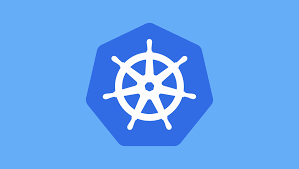Kubernetes - Labels and Selectors
Dive into Kubernetes Labels
Kubernetes - Labels and Selectors
Introduction
Kubernetes Labels are key-value pairs attached to Kubernetes objects. They serve as metadata for organizing, categorizing, and selecting objects based on their attributes. Labels play a crucial role in enabling flexible, efficient, and dynamic management of workloads in Kubernetes clusters.
What Are Labels in Kubernetes?
- Labels are user-defined metadata that can be attached to Kubernetes objects, such as Pods, Nodes, Services, Deployments, and more.
- Unlike annotations, which store non-identifying information, labels are used for querying and selecting objects.
Key Features
Flexible Categorization: Labels can define meaningful groupings of objects.Efficient Object Selection: Labels allow you to select objects dynamically using label selectors.Dynamic Management: Labels can be updated without affecting the object lifecycle.
- Labels can be applied to nearly all Kubernetes objects, including:
Pods: To identify workloads or applications.Services: To associate services with specific Pods.Nodes: To describe hardware, location, or custom attributes.Namespaces: To organize resources by environment or project.ConfigMaps and Secrets: For grouping related configuration.Ingresses: To tag routing rules.PersistentVolumeClaims (PVCs): To identify storage needs.
Types of Labels
- Although Kubernetes does not define strict types for labels, they can be categorized based on their use cases:
Descriptive Labels
- Used to describe attributes of objects.
- Example:
1 2 3 4
labels: app: frontend environment: production tier: web
Use Case: Identifying the role and environment of a Pod or Deployment.
Semantic Labels
- Conform to Kubernetes-recommended naming conventions.
- Example:
1 2 3
labels: kubernetes.io/instance: nginx-1 kubernetes.io/version: "1.21"
Use Case: Standardized identification of resources for cluster operations.
Custom Labels
- User-defined labels for unique use cases.
- Example:
1 2 3
labels: team: devops managed-by: terraform
Use Case: Organizing resources by teams or tools.
Examples of Labels
Applying Labels to a Pod1 2 3 4 5 6 7 8 9 10 11
apiVersion: v1 kind: Pod metadata: name: my-app-pod labels: app: my-app environment: staging spec: containers: - name: my-app-container image: nginx:latest
Using Labels in a Deployment1 2 3 4 5 6 7 8 9 10 11 12 13 14 15 16 17 18 19
apiVersion: apps/v1 kind: Deployment metadata: name: my-app-deployment labels: app: my-app spec: replicas: 3 selector: matchLabels: app: my-app template: metadata: labels: app: my-app spec: containers: - name: my-app-container image: nginx:latest
Real-World Use Cases
- Workload Identification
- Assign labels like app, tier, or environment to Pods and Services.
- Example: Differentiate between frontend and backend services:
1 2 3 4
labels: app: ecommerce tier: backend environment: production
- Node Affinity
- Label Nodes to describe their capabilities or location.
- Example: Tagging Nodes by region:
1 2 3
labels: region: us-east-1 instance-type: m5.large
- Blue-Green Deployments
- Use labels to differentiate between blue and green deployments.
- Example:
1 2 3
labels: app: my-app version: blue
- Monitoring and Metrics
- Use labels to categorize workloads for observability tools.
- Example: Tag Pods with a team label for monitoring dashboards.
- CI/CD Pipelines
- Label resources managed by automated pipelines.
- Example:
1 2 3
labels: managed-by: jenkins pipeline-id: "12345"
Best Practices for Using Labels
Use Standardized Naming: Follow Kubernetes-recommended naming conventions.Keep Labels Simple: Avoid overly complex or deeply nested labels.Plan for Scalability: Choose labels that support long-term growth and changes.Avoid Sensitive Data: Do not store confidential information in labels.Leverage Label Selectors: Use match expressions in selectors to dynamically manage workloads.
What Are Label Selectors?
- A label selector is used to select Kubernetes objects based on their labels.
- These selectors are defined by specifying key-value pairs, and they support two types of selection criteria:
Equality-based Selectors: Select objects based on exact matches for label keys and values.Set-based Selectors: Select objects based on set membership, allowing for more complex matching.
Equality-based Selectors
- Equality-based selectors allow you to filter objects based on an exact match of key-value pairs.
- The syntax for equality-based selectors uses the = (for exact matches) or != (for negation).
- Example: You can use an equality-based selector to select all Pods with the label app=frontend:
1
2
3
selector:
matchLabels:
app: frontend
- This selector will match all objects that have the label app with the value frontend.
- You can also use != for negation. For example, to select all Pods that are not part of the frontend app:
1
2
3
selector:
matchLabels:
app: "!=frontend"
Set-based Selectors
- Set-based selectors allow you to filter objects based on whether a label value belongs to a set of values.
- Set-based selectors support operators such as in, notin, and exists.
- Example: Selecting Pods where the environment label is either production or staging:
1
2
3
4
5
6
7
selector:
matchExpressions:
- key: environment
operator: In
values:
- production
- staging
- This selector matches all Pods that have the environment label set to either production or staging.
- You can also select objects where a key exists, regardless of its value, using the exists operator.
- For example, to select all Pods that have the tier label:
1
2
3
4
selector:
matchExpressions:
- key: tier
operator: Exists
- This will select all Pods that have the tier label, no matter the value.
Conclusion
Labels are a foundational feature of Kubernetes that enable efficient organization, selection, and management of resources. By strategically applying and using labels, teams can streamline operations, improve observability, and achieve better control over their Kubernetes clusters.
This post is licensed under CC BY 4.0 by the author.
